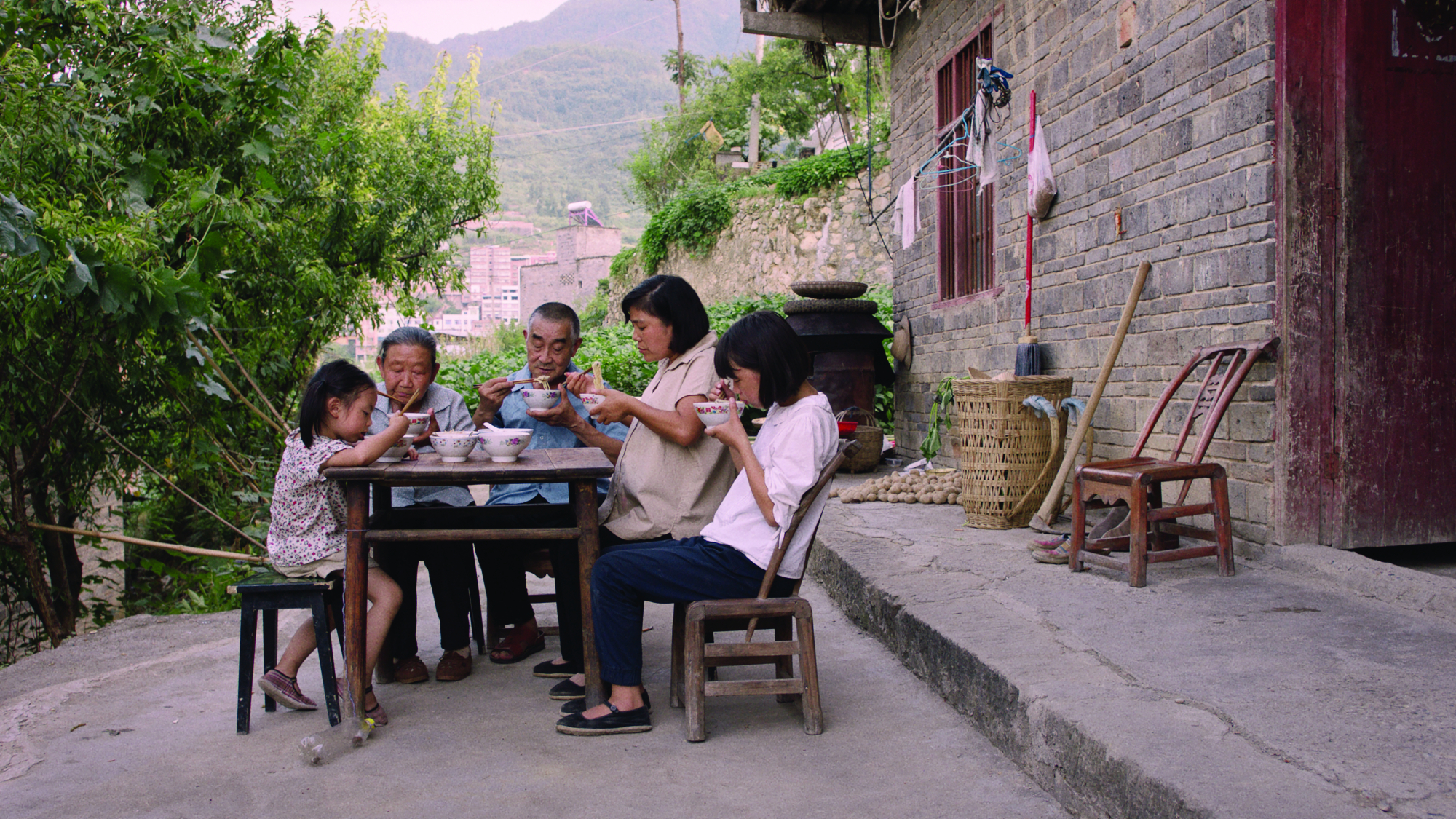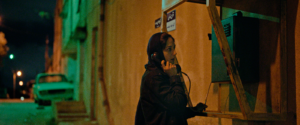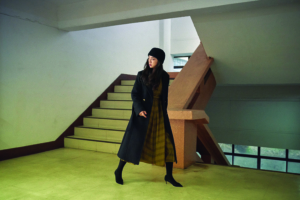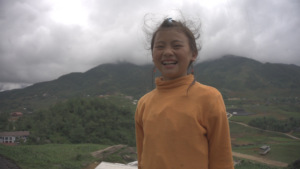Straddling the line between autobiography and fiction, Li Dongmei’s Mama (2020) opens with the line that ‘the true story of this film happened in the 1990s’. In her debut feature film, Li draws on her own childhood growing up in rural China via a subdued style that unpicks these memories from an unobtrusive distance. Holding an assured – almost painstakingly precise – handle on her story, the director sets her film within an unnamed village in the Chongqing province across a single week, cycling through a repetition of days and routines that ultimately lead to a painful event in the lives of a young girl and her mother.
Mama immediately opens a window into this village through its use of diegetic sound. In its opening shot, we see the back of a twelve-year old girl, Xiaoxian (Ge Wendan), as she walks slowly through a trail in the countryside, surrounded by overhanging tree branches. From chirping birds to humming cicadas to Xiaoxian’s shoes cutting into the dirt, the film’s sound design protrudes in sharp clarity. It’s through these atmospheric details that Li introduces us to the mountainous, lush terrain and green fields as the shot fades to the first chapter heading: ‘The First Day’. We see Xiaoxian now from a distant wide shot as her figure inches closer to the camera. As she walks towards her out-of-focus grandfather (Shen Jihua) working in the fields, she tells him simply: ‘Grandpa! Lunch is ready.’

Sharing food becomes a reliable connector between the family members, whether it’s up in the mountainous home with Xiaoxian’s paternal grandparents or with her maternal grandparents down in the local village. As the film moves chronologically, fading to black as each day begins and ends, these markers become part of the rhythmic feel of the film’s sparse narrative. In one early scene, as Xiaoxian’s younger sister Xiaowei (Xiao Guoli) does her homework in the dining area – which consists of a few scraggly chairs and a wooden table, and is only detailed with corn husks hanging up on the walls and potatoes stacked against the sides – Xiaoxian and her paternal grandparents join her, the camera holding patiently as they pick up their food with chopsticks and chew in silence. The emphasis in the film turns less on verbal exercise than on the small details and gestures that make up the day, like the creaks as Xiaoxian climbs down the ladder of her bedroom loft; the steps she takes to the outdoor kitchen to fire up the coals; and the sound of the metal spatula clanging against the sides of the wok.
Mama draws inspiration from the work of Li’s explicitly cited filmmaker influences, as well as from the quotidian focus of Iranian new wave cinema.
Cutting its teeth within the arthouse genres of slow cinema[1]For more on slow cinema, see Andrew Russell, ‘Slow Cinema: What It Is and Why It’s on a Fast Track to the Mainstream in a Frenetic World’, The Conversation, 30 April 2019, <https://theconversation.com/slow-cinema-what-it-is-and-why-its-on-a-fast-track-to-the-mainstream-in-a-frenetic-world-114769>, accessed 17 February 2022. and slice-of-life drama (the film premiered at the 2020 Venice Days film festival, and won the Fei Mu Award for best early-career Chinese-language film at the 2020 Pingyao Crouching Tiger Hidden Dragon International Film Festival), Mama draws inspiration from the work of Li’s explicitly cited filmmaker influences – directors Robert Bresson and Yasujirō Ozu[2]‘Mama – Director’s Intro’, YouTube, 5 August 2020, <https://www.youtube.com/watch?v=YEyIYK43_6g>, accessed 31 January 2022. – as well as from the quotidian focus of Iranian new wave cinema.[3]Zhu Ying & Chen Lei, ‘Reenacting Her Mother’s Final Days, a Director Found Solace’, Sixth Tone, 25 May 2021, <https://www.sixthtone.com/news/1007558/reenacting-her-mothers-final-days%2C-a-director-found-solace>, accessed 17 February 2022. Using local and non-professional actors, Li’s filmmaking approach is both observational and personal, seldom veering into melodrama despite the story’s tragic trajectory. In her video introduction to the film made for its Venice Days premiere, the director describes the journey to making the film as being driven by a desire to commemorate her own childhood trauma and reconcile these feelings through her shooting style: ‘I’ve always wanted to use this film to sort out my memories; it’s also a farewell to my mother.’[4]Li Dongmei, in ‘Mama – Director’s Intro’, op. cit.
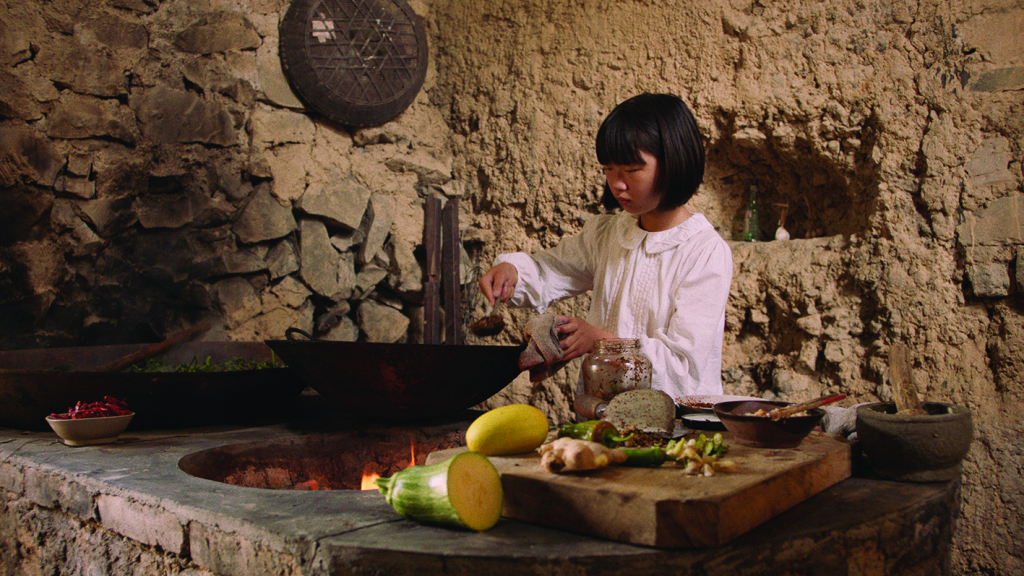
In painting these difficult memories through an observational lens, Li’s chosen style creates a certain detachment from her characters, the film’s minimalist direction making it hard to probe their thoughts. On the first day, Xiaoxian and her classmates walk from their homes down to their school in the village via a twisting mountain road – the duration of the shot signifying the presumably hours-long journey taken to reach the main village (an important detail that has devastating consequences later on). Cinematographers Shen Xiaomin and Zhang Yalong capture this through a wide shot, slowly panning across to follow the children’s languid descent down the bends of the mountain. From this distance, the children occasionally become hidden from the camera’s view, weaving in and out of the treescape. The frame thus shifts towards a bigger picture of what surrounds them: the revving engines of the cars that drive past them and the telephone wires strung across the lush terrains, each of which hint at the modernisation of rural Chinese life.
The film’s scarce dialogue may reflect Li’s own memory gaps left unfilled at the time – or, in fact, Xiaoxian’s limited knowledge of her mother’s situation at the time – but it also signifies the challenge of reconstructing personal anguish for her viewership. Li avoids this dilemma by providing fragmented, vague scenes, sometimes with unknown characters. On the first day, Xiaoxian hops off the back of her uncle’s tricycle motorbike into a store with her schoolfriends, and disappears from view. Meanwhile, within the long shot, a pregnant woman enters the frame with her husband, looking at some items in the shop next door. The objective shot shows the contrasting action between the two shops; as the couple walk out of frame, Xiaoxian exits the shop, simply staring in the direction of the woman. There is no indication that any connection exists between the two characters.
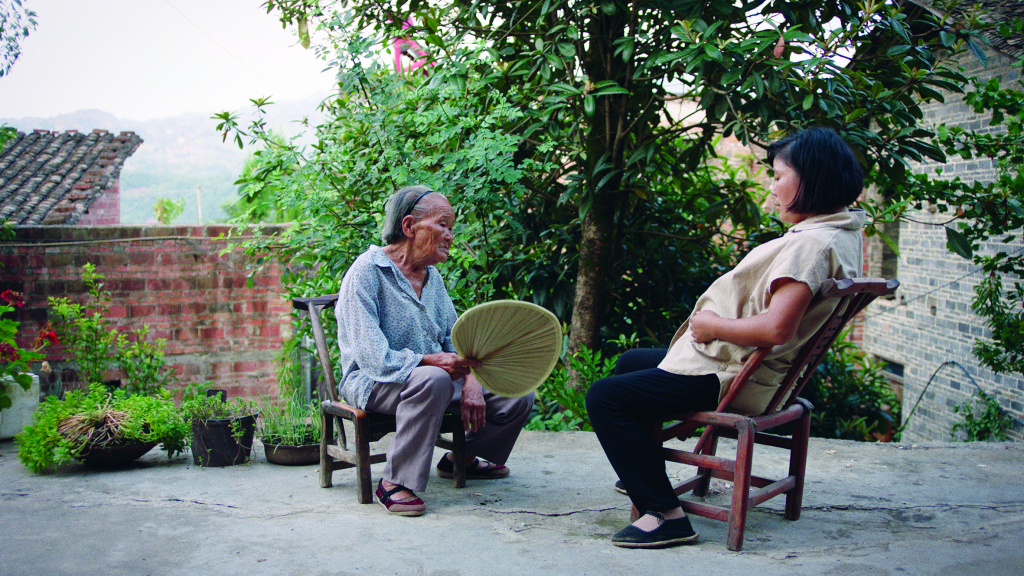
Xiaoxian later meets with another younger sister, Xingxing (Gong Yanxin), and her heavily pregnant mother (Cheng Shuqiong) for dinner with her maternal grandmother (Tan Yuxiang) and grandfather (Ge Shidi). Xiaoxian finds herself here again – this time, at her mother’s side – with chopsticks clinking on bowls and noodles being slurped in (noisy) silence. The paucity of words shared among the family members leaves gaps in the information that is divulged, and the patience of the stationary camera produces shots that linger languidly without clear narrative meaning.
There are clues, however, of a weightier story under the surface of an otherwise quiet, eventless drama. In the classroom on the second day, students including Xiaoxian (as Xingxing sits playfully under her desk) recite the ‘Ballad of Mulan’ – a scene that hints at the gender preferences still at play in China centuries after it was written:
They asked Daughter who’s in her heart
They asked Daughter who’s on her mind
No-one is in Daughter’s heart
No-one is on Daughter’s mind […]
Mulan has no elder brother
I want to buy a saddle and horse
And serve in the army in Father’s place.
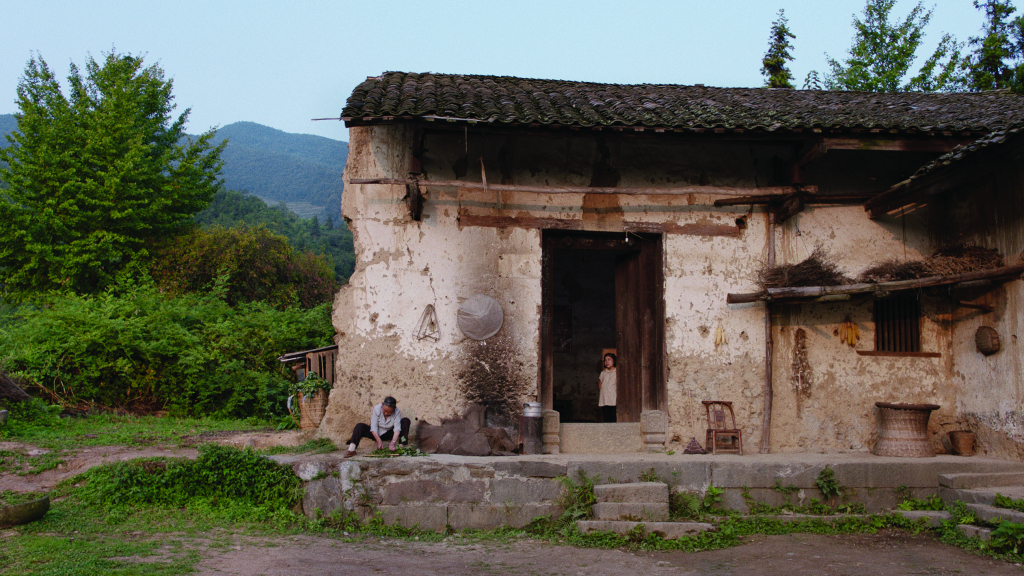
Later in the day, a phone rings in a house in the main village. An aunt eventually picks it up, but we don’t hear the other side – only her vague questions: ‘What will you do about it?’ she asks. ‘I can’t change my mind? Who is more important? Our children or your sister’s?’ When the phone rings again, Xiaoxian’s mother finally picks it up but is greeted by a dial tone. We are left to decipher any pieces of meaning from her body language and facial expressions: she looks down with a sense of helplessness, holding her belly delicately as if cradling something both fragile and precious. Li leaves it, perhaps too readily, to her actors’ naturalistic performances to tell the story. Xiaoxian’s mother’s same silent resignation is evident on the third day, as the camera affectionately watches her knitting in her chair. She is helped onto the back of a truck, which returns back to the mountain village at night. While the film does not explicitly reveal the full story, Li recounts that her real-life mother returned to her husband’s village two days before going into labour because a relative said it was bad luck for a woman to give birth in her parents’ house.[5]Zhu & Chen, op. cit.
The social context of when and where the film is set is critical to understanding its formal structure, as well as, ultimately, how the story ends. While the one-child policy is not directly discussed in the film, as scholar Maja Korbecka points out, ‘Its influence on [Mama’s] cinematic reality is undeniable.’[6]Maja Korbecka, ‘Mama’, easternKicks.com, 21 December 2020, <https://www.easternkicks.com/reviews/mama>, accessed 31 January 2022. In rural areas, the one-child policy – which lasted for thirty-six years and only ended in 2016 – permitted a second child to be born if the first child was a girl.[7]See Andrew Mullen, ‘China’s One-child Policy: What Was It and What Impact Did It Have?’, South China Morning Post, 1 June 2021, <https://www.scmp.com/economy/china-economy/article/3135510/chinas-one-child-policy-what-was-it-and-what-impact-did-it>, accessed 31 January 2022. Against the backdrop of the policy, clues regarding the enormous familial and societal pressure to bear sons and produce a male heir – who could in turn inherit property and work in the fields – are speckled through the film, from shots of the grandparents working hard in the fields in their old age to images of the young daughters flitting around the school grounds. Li delicately depicts how Xiaoxian’s mother’s powerlessness has led to her isolation, often tenderly portraying her in moments of solitude: such as in one scene, in which she lies in her bed in the middle of the night, her back to the camera and her hand supporting her belly; and in another, where we watch her knitting alone in her chair.
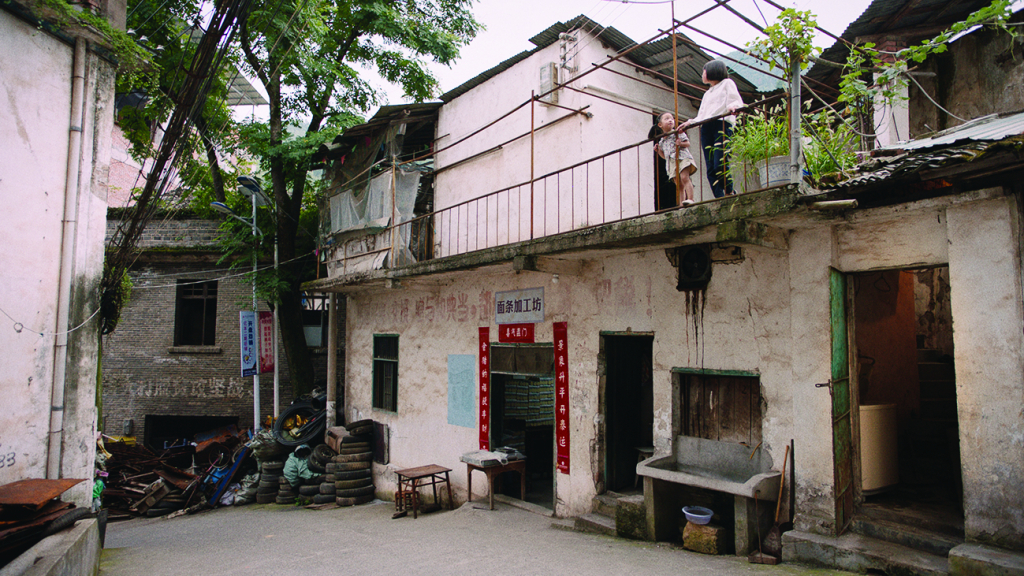
The minimal action of the previous chapters, crawling up towards the film’s climax, renders the fifth day the most tragic. After Xiaoxian’s mother’s fate has been pre-empted by two other deaths in the village – notably, that of a neighbour’s second daughter in hospital earlier the same day – a clear dramatic urgency relating to her pregnancy complications emerges at night-time. In pitch darkness, village men hurriedly carry her on a stretcher all the way from the top of the mountain down to the hospital’s operating room. But as foreshadowed by the children’s excruciatingly long journey down the mountain, time is not in their favour. The visuals tell more of the story than any dialogue could, with Li cutting to a bloodstain on a white sheet, a half-covered curtain in the frame with an empty bed and a surgeon cleaning her tools to elucidate Xiaoxian’s mother’s sorrowful end, despite the survival of the new infant – another girl.
It’s through its study in images, silence and soundscape that Mama allows its audience to emotionally access memories of this event, painting a simple day-to-day picture of its family before it hits its most consequential moment.
Marking the commencement of the mourning and funeral period, the sixth and seventh days display an outpouring of emotion unseen in the rest of the film, in which sounds – such as the beating drums of funeral music – convey overwhelming grief. At times in these chapters, Li still controls the extent to which emotions are hidden from her viewers. But while the shot of Xiaoxian and her sisters at their mother’s gravesite is positioned at the back of their heads, the wails and cries of the four sisters – along with those of their father (Wang Xiaoping), who has hitherto been an absent figure working in the distant city of Dongguan – highlight the deep trauma that has infected all family memories as a consequence of this singular, momentous loss. Later that day, six family members sit around the dining table eating again – this time with no mother in sight, the previous sense of easy familiarity having been extinguished and replaced by heartbreaking silence.
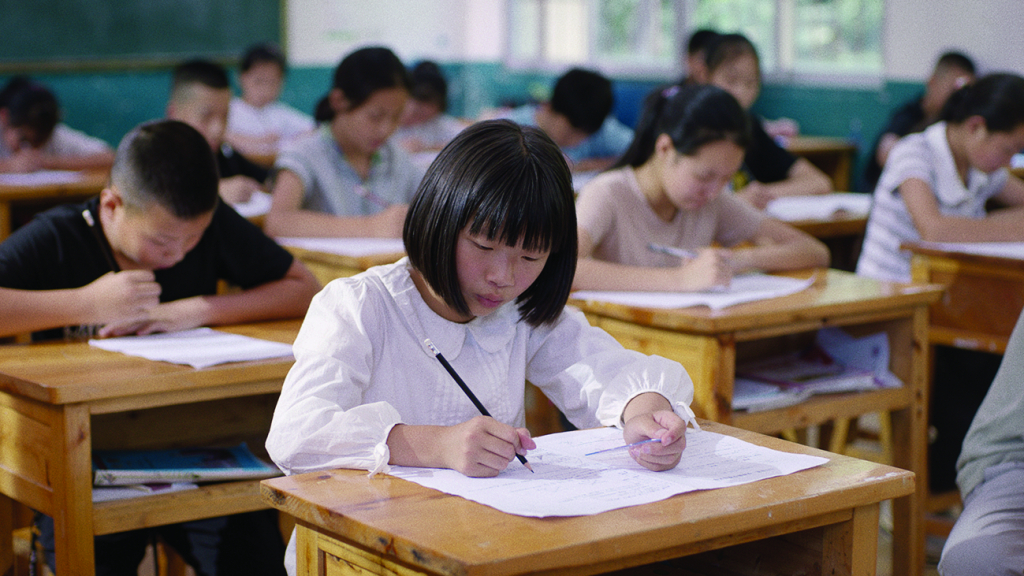
It’s through its study in images, silence and soundscape that Mama allows its audience to emotionally access memories of this event, painting a simple day-to-day picture of its family before it hits its most consequential moment. Reviewer Levin Tan writes that the film is like ‘unearth[ing] artifacts from centuries prior’, objects ‘whose temporalities are so removed from our current existence and yet hold such essential insights to our understanding of who we are and why we do as we do’.[8]Levin Tan, ‘MIFF 2021 Review: Mama’, Filmed in Ether, 28 July 2021, <https://www.filmedinether.com/reviews/miff-2021-review-mama/>, accessed 31 January 2022. Li, by offering an understated display of mundane routines, reconstructs her memories not so much as a melodramatic exercise in reminiscence, but as a means of conveying the ambiguity of concealed thoughts and lives.
In Xiaoxian’s last real interaction with her mother, in which she bids her goodbye in the main village before leaving to board at her elementary school, she tells her, ‘Mum, you can go back now.’ The sun has set, the sky has turned a midnight dusky blue, but her mother stands unmoving, watching Xiaoxian and Xingxing walk away on an empty road away from her. It affirms that, while Li’s bare-bones aesthetic closes off the possibility of seeing her recollections in all of their subjective vividness, it still unveils just enough – if only a restrained insight – into the personal relationships rooted at the heart of the narrative: those between sisters, between grandparents and their grandchildren, between mother and daughters. While we see her mother’s back, we can feel Xiaoxian drifting further away from her, her love both impenetrable but unwaveringly true.
Endnotes
| 1 | For more on slow cinema, see Andrew Russell, ‘Slow Cinema: What It Is and Why It’s on a Fast Track to the Mainstream in a Frenetic World’, The Conversation, 30 April 2019, <https://theconversation.com/slow-cinema-what-it-is-and-why-its-on-a-fast-track-to-the-mainstream-in-a-frenetic-world-114769>, accessed 17 February 2022. |
|---|---|
| 2 | ‘Mama – Director’s Intro’, YouTube, 5 August 2020, <https://www.youtube.com/watch?v=YEyIYK43_6g>, accessed 31 January 2022. |
| 3 | Zhu Ying & Chen Lei, ‘Reenacting Her Mother’s Final Days, a Director Found Solace’, Sixth Tone, 25 May 2021, <https://www.sixthtone.com/news/1007558/reenacting-her-mothers-final-days%2C-a-director-found-solace>, accessed 17 February 2022. |
| 4 | Li Dongmei, in ‘Mama – Director’s Intro’, op. cit. |
| 5 | Zhu & Chen, op. cit. |
| 6 | Maja Korbecka, ‘Mama’, easternKicks.com, 21 December 2020, <https://www.easternkicks.com/reviews/mama>, accessed 31 January 2022. |
| 7 | See Andrew Mullen, ‘China’s One-child Policy: What Was It and What Impact Did It Have?’, South China Morning Post, 1 June 2021, <https://www.scmp.com/economy/china-economy/article/3135510/chinas-one-child-policy-what-was-it-and-what-impact-did-it>, accessed 31 January 2022. |
| 8 | Levin Tan, ‘MIFF 2021 Review: Mama’, Filmed in Ether, 28 July 2021, <https://www.filmedinether.com/reviews/miff-2021-review-mama/>, accessed 31 January 2022. |
